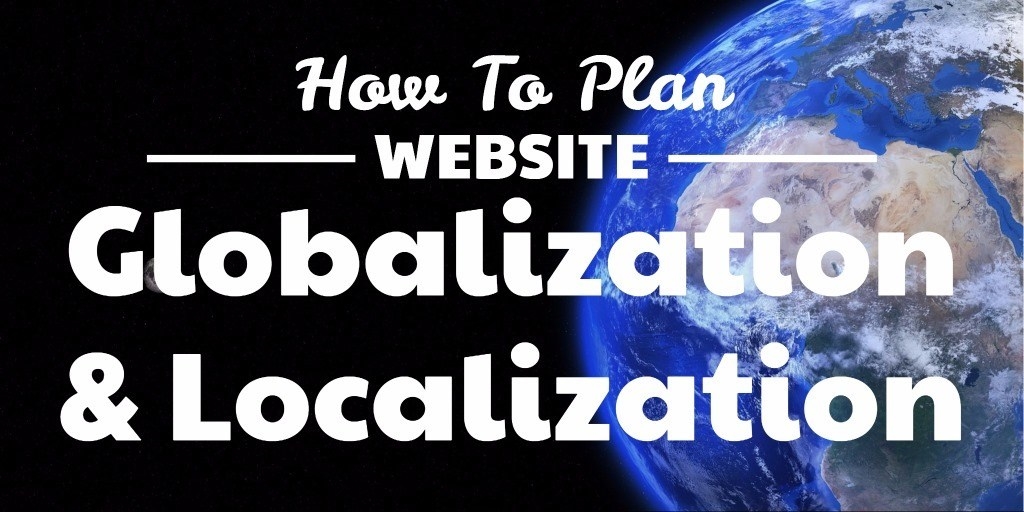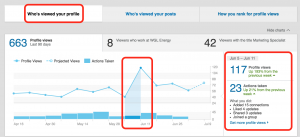
Global economy requires companies to adapt web strategies to regional audiences. Globalization became a necessity, a strategy to make wider audiences understand your product, brand, message, website, offer. Progressive companies not only translate their website content in many languages, but improve the online experience for prospects and customers as well. Companies want to launch sites in many languages faster, with less resources and easier maintenance.
If you are tasked to start Globalization and Localization process for your company, this post will help. Prepare your site for localization, internationalize content management system (CMS), provide unified user experience. Here are the first steps. I will cover globalization of a website only, leaving application localization, testing, tools, measuring success and vendor insights for another time. This post addresses initial planning, strategy, and considerations.
First, note the terminology. To make it simpler, the long words – globalization, internationalization, translation, localization – are abbreviated to the first and last letters with a number that indicates how many letters there are in between. Globalization becomes g11n, internationalization – i18n, translation – t9n, and localization – l10n.
- Globalization encompasses everything that need to be done to prepare the business for international marketplace. It addresses the business issues associated with taking a product global. It involves integration of localization throughout the company after proper internationalization and product design, as well as marketing. This usually include not only digital activities, like website or app adaptation, but physical expansion as well: opening offices in target countries, providing phone support in the language of the target audience, etc.
- Internationalization is a process of generalizing a product so it can handle multiple languages and cultural conventions without the need for re-design. I18n is the process of generalizing the product to adapt to languages and cultural conventions across locales. It happens during software development. In our discussion, it applies to your content management system (Drupal, WordPress, etc.)
- Localization is the actual process of converting software or products (website, in our case) from one language to another. It involves making a product linguistically and culturally appropriate to the target locale (country/region and language) where it will be used and sold.
- Translation is converting the meaning from one language to another and refers to written text form. Translation is a part of localization process and includes adapting date and time formats, changing currencies, cultural appropriation, changing UX and complying with local laws and regulations.
Planning
Globalization program should include four main components: Strategy, User Experience, Content, and Technology.
- Strategy.
There are a couple of options for localizing a site – translated or local. You can select to translate your corporate website into the languages you want to target or give local teams the freedom to create and maintain a customized site for the local audience. Both approaches have benefits and drawbacks. Both have the need for initial and ongoing support, well-defined guidelines and brand requirements.
Many companies found that having a combination of translated corporate pages and local pages works best. Development, content, and brand teams work together as a part of a centrally-managed program that controls brand consistency, rollout timelines, road maps, and common metrics. Globalization lead will define and regularly review standards and best practices, craft a support and resource plan, create target international personas.
Training should be a part of your strategy. Train both local and centrally located teams on the processes, workflows and expectations. Enable them to efficiently customize web experience for their target local audiences. If they manage their budgets, set up vendor engagement processes. Often vendors are managed centrally. Budget management should be a part of globalization strategy and adjusted to accommodate changing needs.
- User Experience
Requirements will stem from your target personas profiles. It should support the expectations in local markets and have consistent key elements, like brand, content, look and feel. Images, videos, content, visual elements, conventions and preferences should fit the locale. Functionality, design and navigation should be a part of user experience strategy and provide ability to quickly find local content. Your goal is to provide a unified and coherent global experience, where templates ensure consistency and compliance with global brand strategy.
- Content
Creation and management falls under global content model. Universal content applies to all countries. It can be centrally maintained and translated. Regional content is relevant to a certain region only. Local content is specific to a country. Regional and local content can be managed by regional teams. Content publishing plans determine where and when to publish which content. Invest in defining content taxonomy and content production process. Don’t forget about international SEO.
Content owners should be responsible for content creation workflow and publish the right document in the right place at the right time. They will prepare documents for translation and keep track of documents, their location, versions, etc.
Global content applies to all sites. For example, company logo, brand colors, button styles, etc. Other types of content can be localized, like software screenshots, infographics and whitepapers. Your Content Management System (CMS) should be able to allow for multi-site asset management when building a webpage. For example, if your infographic is in /images/ folder, your CMS should pick /images/graph-en.png for English language site, /images/graph-fr.png for French and so on.
- Technology
Can save a lot of time and resources. If your CMS allows, implement Multi-Site Management system with automation and asset management rules.
Standardize your design and encodings for multilingual content display. Use Unicode for multilingual content. Separate style of web page components from translatable elements – your content updates will not affect layouts.
Implement fallback. Define styles for each locale. It will allow you to control font sizes and formats. Outline and follow browser support requirements.
Make a business case for each language or country you are planning to expand into.
Considerations
- Languages – how many and which ones?
This is a difficult question to answer because you will have many stakeholders and all of them might want to address their markets. You will need to define, categorize, and prioritize those requests and expectations based on business global strategy and corporate goals. You can identify the countries that bring most revenue and localize the sites when you think the trend will continue.
- What content to localize?
The answer is different for every company. Specify which products are most successful in which markets. Find out how well the people in those countries tolerate content in foreign languages. Perhaps, you can secure a limited budget to test localization of some content to guide your future international investment.
Once you have your target countries and languages, build international customers’ personas. Local teams who interact and understand the customers will help align content with the personas. Decide if the company voice in that region should match the corporate voice or should be adjusted to meet the expectations of the regional audience.
Categorize all available content – text, graphics, documents, videos, product screenshots, etc. Do not localize everything. Use web analytics data and feedback from prospects and customers to decide what makes sense to localize. Determine what gets localized first (for example, product pages, sign up forms, manuals and documents, demos, product screenshots, etc.) and what gets localized later.
Create a tiered market model which meets your customers’ and prospects’ expectations. Content that supports main corporate programs, for example, might need to be translated first and localized to fit the specifics of each major market. Similarly, create a tiered structure for translation languages. When you are done, you will have tier 1 languages (get translated and released first) and lower tier languages that get released later. Tier 1 content always gets translated. Lower tiers get translated for some languages or only upon request.
- Country-specific legal and technological considerations.
Some countries have legal and/or technical requirements that need addressing. Consult with legal and technology team who will check if there are additional requirements to address in the countries you are targeting.
Sometimes, you may need country-specific documentation to obtain what you need for launching a site. For example, to launch a site on a designated business domain in Japan (sitename.co.jp), you will need to submit a business certificate (Japanese articles of incorporation) for the Japanese government to allow you to use the business domain matching your company name.
There are regulations on mandatory website content. For example, if you have visitors from UK, you need to have UK Modern Slavery Act Statement on your website. Some countries require explicitly getting a user permission to proceed. If you did not ask your Canadian visitors permission to opt into your email campaigns, you will get fined if you send email to Canadian citizens. If you do not have an explicit notification for any visitor from Europe that you are setting cookies on their browser and a helpful link to your Cookie Policy document, you are in legal trouble.
Summary
Start with your business needs, evaluate your technology, consider brand requirements and develop guidelines for the globalization effort. Consult with business, technology owners, marketing, local teams and leaders to gather feedback and recommendations for their specific markets.
Keep consistent and frequent communication with stakeholders and have clear governance that addresses ownership and control. Define and communicate processes and workflows that allow all teams to work together towards the same goal and make your globalization effort successful.
Now you are ready for planning for resources, picking vendors, and setting up QA.
* Adapted lead image: Public Domain, pixabay.com via getstencil.com
The post How To Plan Website Globalization & Localization appeared first on Search Engine People Blog.
(92)
Report Post







